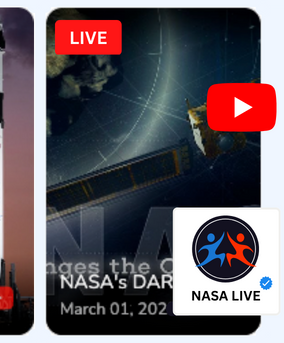Using Video Analytics to Improve Your Social Media Video Content

Video content has become an essential component of social media marketing, as it has proven to be more engaging and effective at communicating information than other formats. A well-crafted video can make a lasting impression on viewers, helping to increase brand visibility and drive conversions. Enhancing user experience by adding videos in web design can significantly improve your online presence.
Video analytics refers to the process of collecting, analyzing, and interpreting data from video content to gain insights into user behavior, preferences, and engagement. By leveraging video analytics, content creators can make informed decisions on how to optimize their videos for maximum impact and reach on social media platforms.
Identifying Key Metrics for Video Analytics
View count and watch time
View count and watch time are two critical metrics that indicate the overall success of a video. View count refers to the total number of views a video has received, while watch time measures the cumulative amount of time viewers have spent watching the video. Both metrics can provide valuable insights into the effectiveness of your video content, helping you identify areas for improvement.
Audience engagement metrics
Audience engagement metrics, such as likes, comments, shares, and click-through rates (CTR), are essential for understanding how viewers interact with your video content. High levels of engagement indicate that your content is resonating with your audience, leading to increased organic reach and potentially higher conversion rates. Learn how to maximize engagement with social media integration tips for your website.
Demographic and geographic data
Demographic and geographic data can provide insights into the makeup of your audience, helping you tailor your content to better resonate with specific viewer segments. By understanding the age, gender, location, and interests of your viewers, you can create more targeted video content that appeals to their unique preferences and needs.
Traffic sources and sharing metrics
Traffic sources and sharing metrics can help you identify the most effective distribution channels for your video content. By analyzing where your viewers are coming from and how they're sharing your videos, you can optimize your promotional efforts to reach a wider audience and encourage more organic growth.
Utilizing Video Analytics Tools
Social media platform-specific analytics tools
Most social media platforms, such as Facebook, Instagram, and YouTube, offer built-in analytics tools that provide detailed insights into your video content's performance. These tools can help you track various metrics, including views, watch time, engagement, and demographics, making it easier to identify trends and opportunities for improvement.
Third-party video analytics tools
In addition to platform-specific tools, several third-party video analytics solutions can help you gain deeper insights into your video content's performance. These tools often provide advanced features, such as heatmaps, audience segmentation, and cross-platform analytics, allowing you to make more informed decisions about your video content strategy.
Integrating analytics tools with content management systems
Many content management systems (CMS) offer integrations with popular video analytics tools, enabling you to easily track your video content's performance directly from your CMS dashboard. This can help streamline your workflow and make it easier to monitor and optimize your video content over time.
Improving Video Content Based on Analytic Insights
A/B testing and iterative improvements
A/B testing involves creating two or more versions of a video, with slight variations, and comparing their performance to determine which version resonates better with your audience. By using video analytics to guide your A/B testing, you can make data-driven decisions to improve your video content iteratively, leading to higher engagement and better results over time.
Fine-tuning video titles and descriptions
Optimizing video titles and descriptions based on video analytics can significantly impact your content's visibility and reach. Use relevant keywords and phrases that appeal to your target audience while ensuring the titles and descriptions accurately represent your video content. This can help improve your video's search engine ranking and increase the likelihood of users clicking on your video when browsing through social media feeds.
Optimizing video thumbnails and preview images
An eye-catching thumbnail or preview image can make a significant difference in attracting viewers to your video content. Use video analytics to identify the most effective thumbnail designs and images that drive higher click-through rates. Test different styles and colors to see what resonates best with your audience, and ensure the thumbnail accurately represents the content of the video.
Crafting Compelling Calls-to-Action
Designing effective CTAs within video content
A well-designed call-to-action (CTA) can encourage viewers to take a specific action, such as visiting your website, subscribing to your channel, or sharing your content. Use video analytics to determine which types of CTAs generate the most engagement and conversions, and incorporate these insights into your video content strategy.
Integrating CTAs with social media platform features
Many social media platforms offer features that enable you to integrate CTAs directly within your video content, such as clickable links or buttons. Use these features to create seamless and engaging CTAs that drive your desired outcomes, and monitor their performance using video analytics to optimize your approach.
Enhancing Audience Engagement with Analytics
Leveraging analytics to identify audience preferences
By analyzing engagement metrics and audience demographics, you can gain valuable insights into your audience's preferences and interests. Use this information to create video content that caters to their needs and preferences, which will ultimately lead to higher engagement and satisfaction.
Encouraging audience interaction through comments and polls
Inviting viewers to interact with your video content through comments, polls, or quizzes can help foster a sense of community and increase engagement. Use video analytics to determine which types of interactive elements resonate most with your audience and incorporate them into your content strategy.
Utilizing Demographic and Geographic Data
Tailoring content to specific audience segments
By understanding the demographic and geographic makeup of your audience, you can create targeted video content that appeals to specific viewer segments. This can lead to higher engagement and satisfaction, as viewers are more likely to connect with content that is relevant to their interests and needs.
Expanding reach through multilingual content
If your video analytics reveal a significant portion of your audience speaks a different language, consider creating multilingual content to better serve their needs. This can help expand your reach and improve your overall engagement levels.
Analyzing Traffic Sources and Sharing Metrics
Identifying effective distribution channels
By examining your video content's traffic sources and sharing metrics, you can identify the most effective channels for distributing your content. Optimize your promotional efforts by focusing on these channels, and experiment with new distribution strategies to reach a wider audience.
Encouraging sharing and organic growth
Creating shareable video content is crucial for increasing your reach and organic growth on social media. Use video analytics to determine which types of content are most likely to be shared by your audience, and focus on creating similar content to encourage further sharing.
Measuring the Success of Video Content Strategy
Establishing key performance indicators (KPIs)
To effectively measure the success of your video content strategy, establish clear and relevant key performance indicators (KPIs). These may include metrics like views, watch time, engagement, conversions, and audience growth. By tracking your KPIs over time, you can better understand the effectiveness of your content strategy and make data-driven decisions to optimize your approach.
Comparing performance against industry benchmarks
Comparing your video content's performance against industry benchmarks can help you gauge your success relative to competitors and identify areas for improvement. Use video analytics to track your progress and set realistic goals for growth based on industry standards.
Conclusion
Leveraging video analytics can significantly improve your social media video content, leading to higher engagement, reach, and conversions. By using data-driven insights to optimize your video titles, descriptions, thumbnails, CTAs, and audience targeting, you can create more compelling and effective content that resonates with your viewers. Continually monitoring and analyzing your video content's performance will help you refine your strategy over time, ensuring your videos remain relevant and engaging to your audience.
FAQs
What are some key metrics to track in video analytics?
A1: Key metrics to track include view count, watch time, audience engagement (likes, comments, shares, and click-through rates), demographic data, geographic data, traffic sources, and sharing metrics.
How can video analytics help improve my social media video content?Video analytics can help you identify areas for improvement in your video content, such as optimizing titles, descriptions, thumbnails, CTAs, and audience targeting. This can lead to higher engagement, reach, and conversions.
What are some tools that can help me track video analytics?
You can use social media platform-specific analytics tools or third-party video analytics tools to track various metrics and gain insights into your video content's performance.
How can I use video analytics to optimize my calls-to-action (CTAs)?
Analyze which types of CTAs generate the most engagement and conversions, and incorporate these insights into your video content strategy. Use social media platform features to integrate CTAs directly within your video content, such as clickable links or buttons.
Can video analytics help me identify the most effective distribution channels for my video content?
Yes, by analyzing traffic sources and sharing metrics, you can identify the most effective channels for distributing your video content and optimize your promotional efforts accordingly.
FYI: You can embed YouTube Live automatically with the EmbedVidio platform. Start a free trial and display your social media video widgets now.

Embed live video feeds on your website automatically!
Try EmbedVidio and automatically add YouTube, Facebook, and Twitch live video feeds to your website.
All features included with every plan